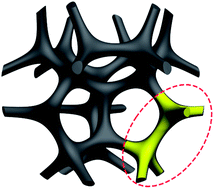Carbon nanotube-coated macroporous sponge for microbial fuel cell electrodes
Abstract
The materials that are used to make electrodes and their internal structures significantly affect microbial

* Corresponding authors
a
Department of Civil and Environmental Engineering, Stanford University, Stanford, California, USA
E-mail:
ccriddle@stanford.edu
Tel: +1-650-723-9032
b
Department of Materials Science and Engineering, Stanford University, Stanford, California, USA
E-mail:
yicui@stanford.edu
Fax: +1-650-725-4034
Tel: +1-650-723-4613
c Department of Chemistry, Stanford University, Stanford, California, USA
d Materials Science and Engineering, King Abdullah University of Science and Technology (KAUST), Jeddah, Saudi Arabia
The materials that are used to make electrodes and their internal structures significantly affect microbial

 Please wait while we load your content...
Something went wrong. Try again?
Please wait while we load your content...
Something went wrong. Try again?
X. Xie, M. Ye, L. Hu, N. Liu, J. R. McDonough, W. Chen, H. N. Alshareef, C. S. Criddle and Y. Cui, Energy Environ. Sci., 2012, 5, 5265 DOI: 10.1039/C1EE02122B
To request permission to reproduce material from this article, please go to the Copyright Clearance Center request page.
If you are an author contributing to an RSC publication, you do not need to request permission provided correct acknowledgement is given.
If you are the author of this article, you do not need to request permission to reproduce figures and diagrams provided correct acknowledgement is given. If you want to reproduce the whole article in a third-party publication (excluding your thesis/dissertation for which permission is not required) please go to the Copyright Clearance Center request page.
Read more about how to correctly acknowledge RSC content.
 Fetching data from CrossRef.
Fetching data from CrossRef.
This may take some time to load.
Loading related content
